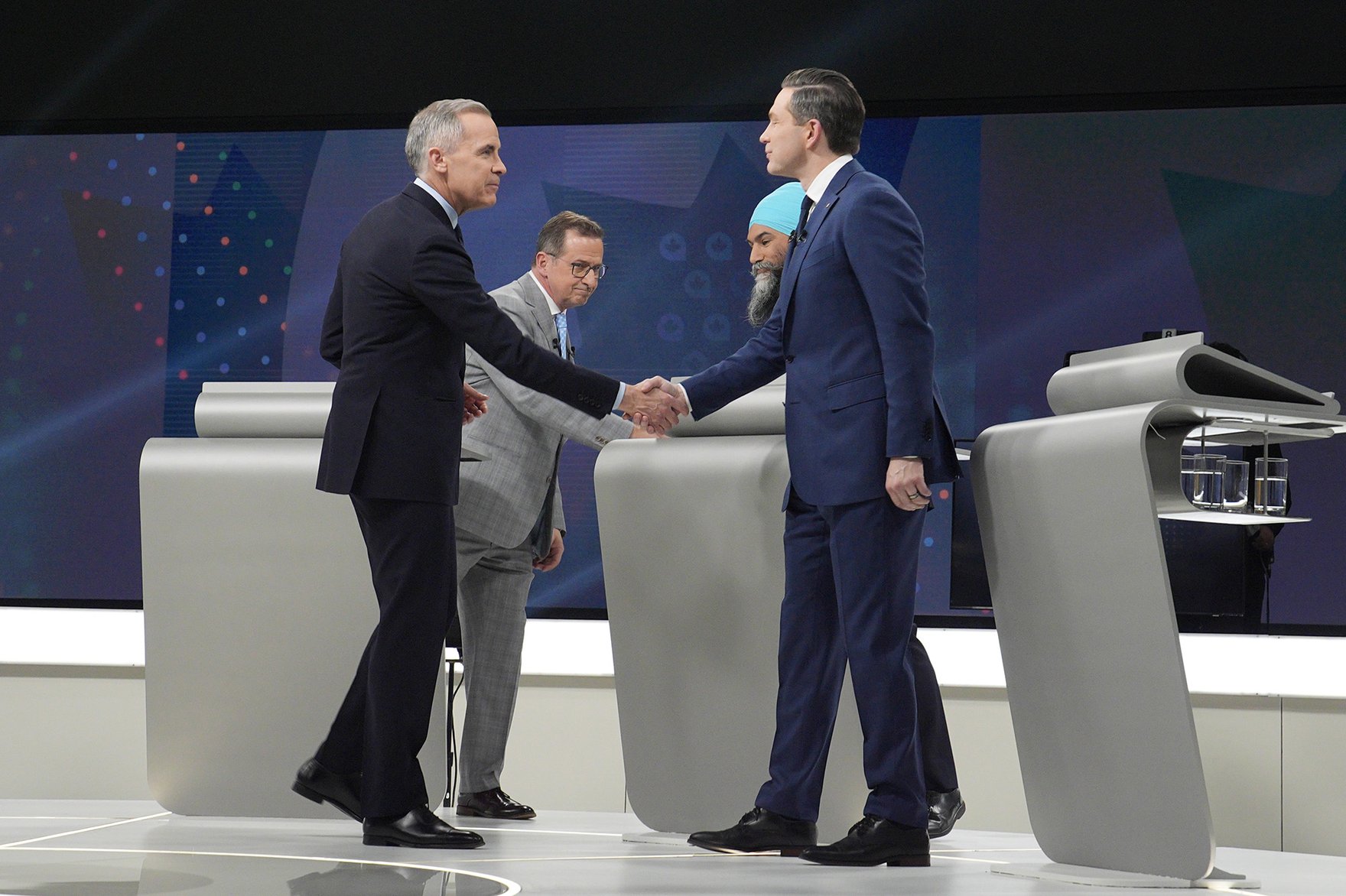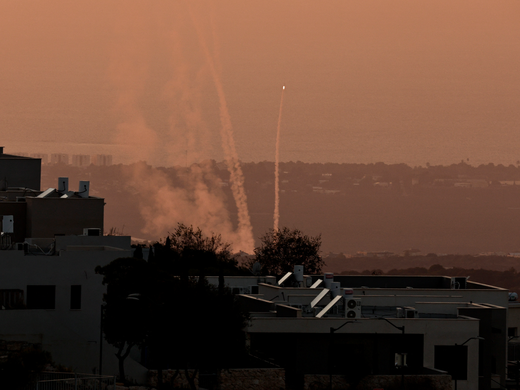“Canada strong.” “Change for an affordable life. For safe streets. For Canada first.” “Made for people. Built for Canada.” These are the titles that front the election campaign platforms of the Liberal, Conservative and New Democratic Parties (NDP), respectively. The repeat reference to Canada reflects the moment we are in — a country under threat. The NDP platform states: “Donald Trump is launching an unprecedented attack on Canada.” That sentiment is shared across the parties. If the country is facing an unprecedented attack, a critical question becomes: What are the parties’ unprecedented responses?
No party rushed to get their election campaign platforms out. Their belated release may suggest irrelevance, at least for the process of voters making up their minds and casting ballots. Yet campaign platforms are the one place where you can go to get a comprehensive sense of a party’s position, after all the serial announcements doled out on the campaign trail.
They also represent a set of very public promises about action, should a party be elected to govern. Of all the elements of campaign platforms, it is those promissory notes that really matter. As Marci Surkes, a veteran Liberal policy strategist, has reminded us, campaign platforms provide the formula for future ministerial mandate letters and direction by the government. That formula will have to address the crisis created by the policies and threats of the Trump administration, a huge overlay on an already dangerous geopolitical environment and a troubled economic and political scene at home.
The platforms of the Conservatives, Liberals and NDP all see the economic policies of the Trump administration as a key threat, and all propose variants on a fortress economy model for Canada as a solution. Among the many promises to strengthen the Canadian economy, the Conservatives aim for greater Canadian natural resource exploitation; the Liberals for government-stimulated investment in major infrastructure projects, including housing; and the NDP for bolstering the protections and rights of workers. Curiously, none of the parties have much of a plan for diversifying Canada’s trading relations with the global economy.
Beyond the theme of economic attacks on Canada, the party platforms are mum about responding to the other forms of threats that the Trump administration may pose to Canada, including political aggression, military pressures, the undermining of core alliance structures critical to Canadian security, or the potential disabling of our intelligence partnership with the United States.
While bolstering Canadian defence features in the plans of all the major parties, the underlying rationale is careful to exclude an explicit American dimension. Both the Liberals and Conservatives agree on the need to raise defence spending to meet the North Atlantic Treaty Organization’s (NATO’s) two percent of GDP baseline by 2030. The NDP is also on board, though it doesn’t commit to reaching the two percent target until 2032. All the while, the NATO spending target is likely to rise well above two percent in the near term.
The Liberal Party platform states that “the North faces existential threats as countries try to take advantage of new shipping routes opened by climate change, exploit our critical minerals and encroach on our borders.” An enhanced Arctic security capability is expressly designed to deter Russia and China; no mention is made of enhanced defence as a response to the United States. The Conservatives also have big plans for a stronger defence posture in the North. The Liberals propose some new defence and security partnerships, especially with the Nordic countries, “in recognition,” as the Liberal Party platform puts it, “of the rapidly shifting security landscape.” That the United States is a big part of that shift goes unmentioned.
Another key and shared promise across the platforms is to strengthen border security. Such measures were initially prompted by a hope that, in doing so, Canada would gain some accommodation from President Trump on tariff impositions. If the hope is fast disappearing, the border security promises remain, shorn of any compelling rationale. A US-manufactured crisis at the border has generated political consensus about a response.
Turning to foreign policy, the question of future alignment with the United States as it moves further in the direction of an “America First” approach, is absent from the platforms. The Conservatives give full-throated support for Ukraine and want a strong position taken against Iran. The latter tactic is in line with the US approach; the Ukraine policy is not. The Liberals promise a full foreign policy review and to boost Canada’s diplomatic footprint abroad.
The Liberal Party platform suggests that, as the United States steps back from global leadership, Canada will step forward. Contrary to the Conservatives, the international assistance budget and some of its progressive aims, would continue to be funded. The Liberal Party is in line here with the NDP when it comes to conducting a robust, “principled” foreign policy. But what that policy would look like remains on the drawing board.
Unlike proposals to enhance defence and border security, measures to strengthen Canadian national security capabilities get vanishingly little attention. The Conservative Party platform suggests the need to generally strengthen Canada’s national security institutions, specifically the Canadian Security Intelligence Service and the Royal Canadian Mounted Police, to better tackle serious crimes, espionage, foreign interference and money laundering. There are no specifics in the Conservative platform around how that might be done. The Liberals promise to tighten national security review around foreign investment in Canada but fail to come up with a concrete plan to deal with the biggest foreign investor of all: the United States. There is a sidenote about producing a “complementary national security review” — something that the Liberal government previously promised but failed to deliver on.
Comparing the party platforms allows some conclusions to be drawn across the political spectrum about how the parties plan to deal with a critical age of geopolitical disruption and the sudden turn taken by the United States away from its long-established alliance relationship with Canada. Several things stand out. The first is the lack of anything approaching a real plan to deal with the full range of threats posed by the United States, beyond the issue of tariffs. The disruptive impacts of the United States on a broad front are tiptoed around. What the Trump effect has done is produce an extraordinary degree of consensus among the major parties when it comes to defence upgrades and border security postures, though any reference to the US prompt is missing. Given the moment the country faces, there is an astonishing lack of attention to national security capabilities. The traditional gravitational pull of purely domestic political issues continues to exert itself.
Mark Carney made an early statement on the campaign trail on March 25, 2025: “My responsibility is to plan for the worst, is to think about the most difficult evolution of the new threat environment, what it means for Canada and how do we best protect Canada.”
By any measure, the campaign platforms of the parties offer little planning for the worst and little thinking on the new threat environment. Shying away in public from the worst case, shaped by the United States, may be an understandable impulse during an election campaign. Let’s hope it’s not maintained by the next government in power.
That government, after all, will have to follow through on a commitment to begin negotiations on a new economic and security relationship with the United States. When that happens, a worst-case American posture may not come to pass, but it better be clearly imagined and planned for.



